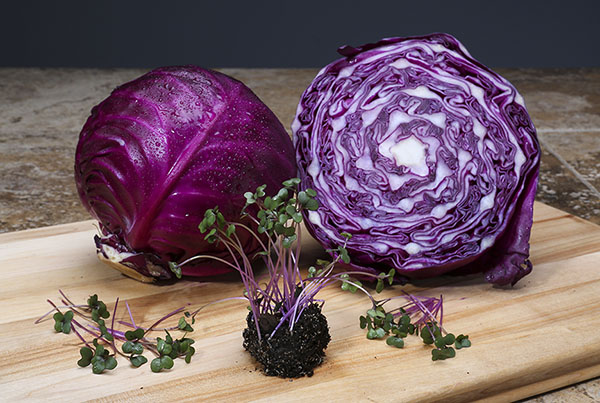To better understand the nutritional effects (health benefits), chemical composition, growing conditions, and shelf life of microgreens, a team of researchers reviewed the science behind them in the Journal of Agricultural and Food Chemistry (October 2018). Microgreens are one- to three-inch-tall herb and vegetable seedlings harvested above their roots about 10 to 14 days after germination just as their first pair of leaves appear, visually looking more like stems and seed leaves (cotyledons). These very young vegetable greens have been used by chefs for years as a garnish because of their colors and flavors. Beyond esthetics, microgreens are packed more densely with nutrients than mature vegetables, making them an interesting subject for food and nutritional scientists. Among commercially grown microgreens are arugula, broccoli, green daikon radish, purple mustard, and red cabbage. See also: Broccoli; Cabbage; Food; Mustard; Nutrition; Radish; Seed; Seed germination

Easy to grow, microgreens require minimal soil and water and do not need fertilizers or pesticides. For example, compared to mature broccoli, broccoli microgreens require 93 to 95 percent less time and about 200 times less water to grow, with both forms having equivalent nutrients. Although microgreens are more fragile and have a shorter shelf life than mature vegetables, the microgreens can be grown locally or at home. Because the science of microgreens is still incomplete, researchers suggested that additional research needs to be conducted to determine the bioavailability of nutrients, best growing conditions, and nutrient stability after harvesting. See also: Plant growth; Plant physiology; Vitamin C; Vitamins in plants





